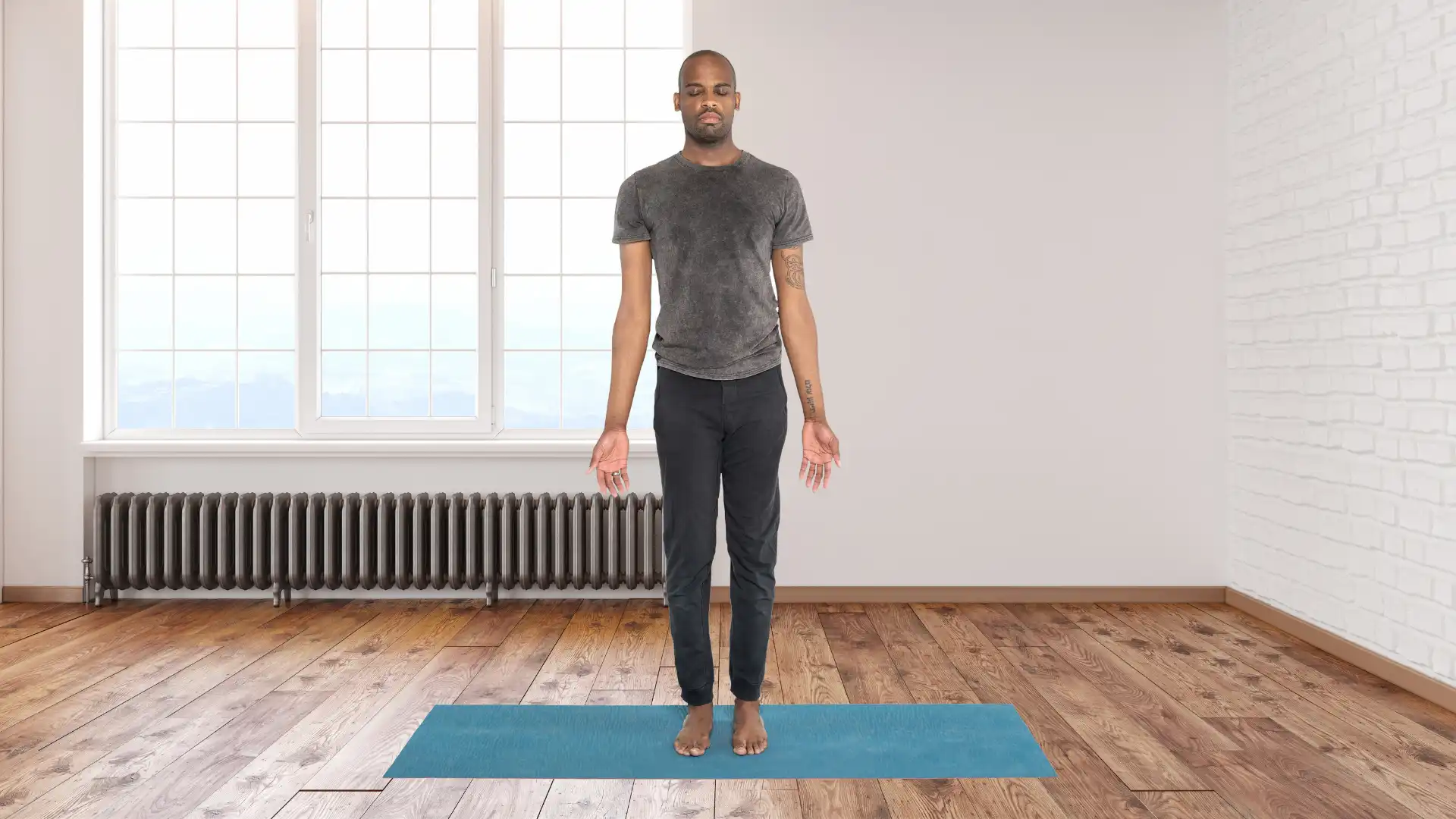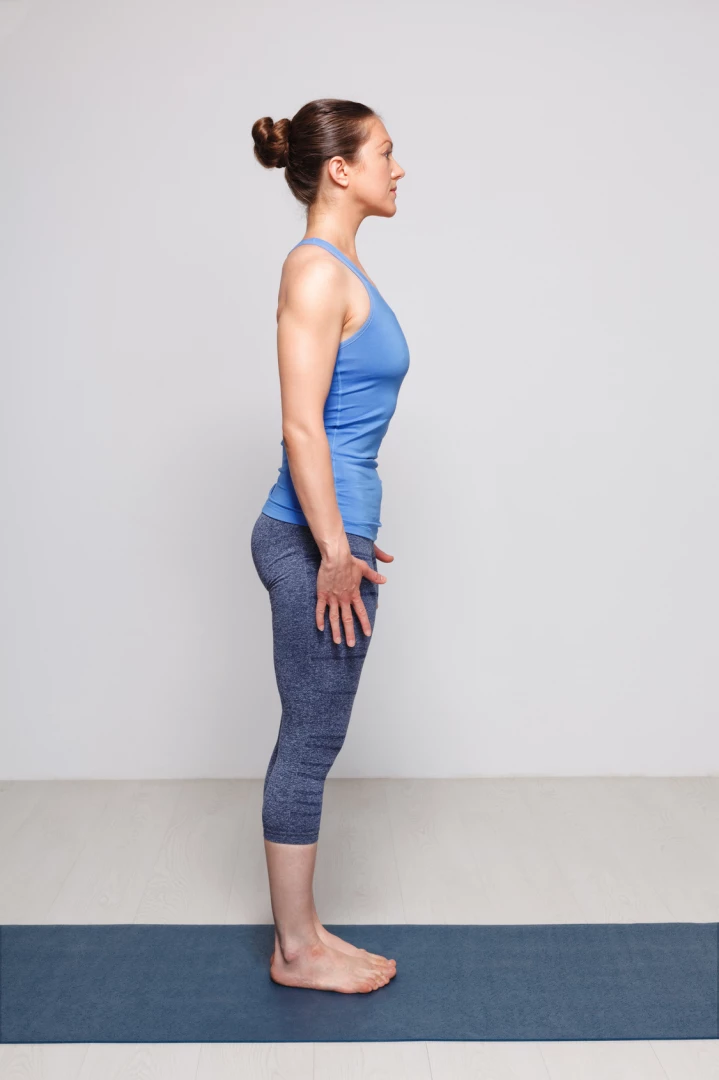Plantar Fasciitis: 6 Ways Yoga Can Bring Relief

The sharp and painful sensations felt at the heel of the foot are the telltale sign of plantar fasciitis. At least three million people in the U.S. alone suffer from this condition.
In very simple terms, plantar fasciitis is inflammation in the band of tissue that runs across the heel of the foot. This band creates support for the arch of the foot. It can become damaged when small tears form in it, causing inflammation.
Conditions that might put you at risk for developing plantar fasciitis include:
-
Less than optimal shoe choices, being on your feet too long
-
Age (it is most common in those aged 40 to 60)
-
Under or overstretching and not keeping fascia healthy
-
Extended durations of activities such as running, jumping and/or dancing
-
Fallen arches
Plantar fasciitis is often more painful first thing in the morning and then after being on your feet for some time. If you have a job that requires you to be on your feet for long hours, making appropriate shoe choices can help minimize this frustrating condition.
Because the symptoms of plantar fasciitis are experienced in the foot, we can sometimes overlook possible causes outside the feet. Other factors can contribute to plantar fasciitis, including tight hamstrings and calf muscles.
How Yoga Can Help Relieve Plantar Fasciitis Pain
1. Learn how to distribute weight correctly through your feet. 
-
Stand in Tadasana (Mountain Pose).
-
Rock front to back, roll your feet from side to side and then find a way to stand evenly through your feet.
-
Spread your toes as wide as you can.
-
Stand and take a few breaths and feel yourself standing through all parts of your foot.
-
If it is painful to do this standing you can do the same series of movements seated in a chair.
2. Use the presence you have learned through your yoga practice to help you be self-aware as you walk.
-
Notice if you are heel striking as you take slow and mindful steps. Heel strike steps can aggravate plantar fasciitis.
-
Instead, try practicing a “neutral foot strike” by placing your weight throughout the foot as you step.
-
With plantar fasciitis, the heel-strike foot position will increase your pain and might cause you to start to create compensating movement patterns which can later create pain in other parts of the body, with particular concern around the knees and hips. Adjusting the foot strike could serve to head off compensating.
3. Stretch your calves.
-
From Bharmanasana (Tabletop Pose), extend one leg straight back placing all five toes and the ball of the foot on the floor.
-
Shift your body weight back toward the back foot to create a stretch through calf muscles.
-
Hold and breathe for 30 to 60 seconds and then switch sides.
This is sometimes referred to as “Sprinter’s Pose,” as it looks like a sprinter in the starting blocks before a race.
4. Stretch your hamstrings.
-
Sit on the floor with your legs extended straight out in front of you.
-
Keeping your legs straight, cross one leg over the top of the other.
-
Keeping the lower and middle back flat, lean forward from the hip crease so that you feel the hamstrings lengthen. If your back is rounded so that you are bending from your waist, place a folded blanket, pillow or bolster under your hips to help tilt your pelvis forward.
-
Then repeat on the second side.
-
Ideally, hold this pose for at least a minute per leg. Crossing one leg over the other will help to isolate the hamstring muscle group better than stretching both sets of hamstrings simultaneously.
5. Stretch the muscles of your feet.
-
From Tabletop Pose, tuck your toes under and then shift some of your weight back so that you have more weight in your knees than in your hands.
-
Continue to shift more weight back until you feel a stretch across the sole of your foot. Hold this and take deep breaths.
-
This shouldn’t be painful but rather a deep stretch of the fascia of the foot.
-
If it is comfortable to do so repeat the pose, placing your feet closer to each other. Then repeat, placing your feet slightly wider than hips distance. This will help vary the portion of your feet in which you feel the stretch.
6. Practice Viparita Karani (Legs Up the Wall Pose). If you have to be on your feet for extended periods of time or if you are a runner, an athlete or dancer, doing this pose daily could help create some relief for you.
-
Lie on the floor near a wall with your feet toward the wall, head away from the wall.

-
Bend your knees and turn them to one side, then slide your glutes close to or against the wall by placing one forearm on the ground, leaning onto it and swinging your legs up the wall as you lower yourself down onto your back.
-
Once lying on your back, if your hamstrings are tight, you can slide your body a bit away from the wall so that your spine can be in its natural “S” curves against the floor, and to enable you to hold the pose longer. You can also bend your legs slightly or position them in a wide “V” position if that is more comfortable.
-
Stay here from 2 to 10 minutes depending on your preference.
This pose is excellent for eliminating pressure from the lower extremities and can help relieve some of the inflammation that builds up in the feet.
BodySensing: Intuitive Yoga for Myofascial Release – A course from YogaUOnline and Yasmin Lambat.

 Emily is passionate about yoga, anatomy, and sustainable movement. She is a yoga teacher, IAYT certified yoga therapist, and massage therapist. Emily has created both a 200 and 300-hour yoga teacher training program focused on therapeutics and a solid understanding of how yoga asanas can be adapted to fit anyone’s needs. She also has written CE trainings to help teachers fill in the gaps after graduating from Yoga teacher training and their real-world experiences. She believes that Yoga is not just for skinny, flexible people. Yoga is for everyone regardless of size, age, and health. One of her goals is to help yoga and movement teachers gain high-level training and education so they can in-turn change the world through yoga. She has over 2500 hour of training and well over 4000 hours of teaching experience. Her teaching has ranged from working with professional athletes to those confined to chairs.
Emily is passionate about yoga, anatomy, and sustainable movement. She is a yoga teacher, IAYT certified yoga therapist, and massage therapist. Emily has created both a 200 and 300-hour yoga teacher training program focused on therapeutics and a solid understanding of how yoga asanas can be adapted to fit anyone’s needs. She also has written CE trainings to help teachers fill in the gaps after graduating from Yoga teacher training and their real-world experiences. She believes that Yoga is not just for skinny, flexible people. Yoga is for everyone regardless of size, age, and health. One of her goals is to help yoga and movement teachers gain high-level training and education so they can in-turn change the world through yoga. She has over 2500 hour of training and well over 4000 hours of teaching experience. Her teaching has ranged from working with professional athletes to those confined to chairs.



